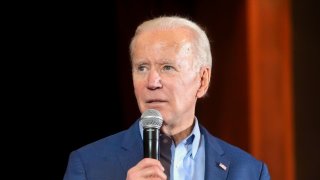High Interest Rates and Economic Risks: Is the Fed Missing the Warning Signs?
Milton Friedman taught that monetary policy has long, variable lags, but Jerome Powell's Federal Reserve risks neglecting this lesson. The Fed's high interest rate policy, focusing on backward-looking data, could cause a hard economic landing and banking issues. Despite strong employment numbers, the Fed is unlikely to cut rates soon, fearing political backlash before the election.
Milton Friedman famously taught that monetary policy operates with long and variable lags of anywhere up to eighteen months or two years. Jerome Powell’s Federal Reserve appears to be neglecting that teaching at its peril.
Instead of taking into account the damage that its high-interest rate policy is already having on the financial system and future economic growth, the Powell Fed hews to a strictly data-driven and backward-looking monetary policy. Under that policy, the Fed anticipates that interest rates will stay high for longer until it sees the clearest evidence that inflation is moving steadily toward its 2 percent inflation target. That heightens the chances of a hard economic landing and renewed banking system problems before yearend.
Unfortunately, today’s stronger than expected employment numbers do not allow us to expect interest rate relief before the year’s end. Coupled with inflation’s recent stickiness, the fact that employment growth remains strong and unemployment is still close to its historic low will be interpreted by the Fed as every reason not to cut interest rates at its interest-setting meeting next week. Meanwhile, absent an unexpected economic slump or a banking crisis, the Fed will be reluctant to cut interest rates in the run-up to the election. It will not want to run the risk of seeming politically motivated.
While it might have escaped the Powell Fed’s notice that the economy is now stalling and that job openings are declining sharply under the weight of higher interest rates, it has not escaped the notice of some major banks. Indeed, JP Morgan’s Jamie Dimon and CitiBank’s Andrew Hollenhorst are saying that the odds of a hard economic landing later this year have increased materially.
The damage that the Fed’s interest rate policy is doing to the banks’ balance sheets also has to be of great concern. It is estimated that high interest rates have caused mark-to-market losses in nearing $700 billion on their bond and loan portfolios. It has done so as high interest have caused a particularly sharp loss in value of their long-dated bond and loan portfolios.
The banks’ weakened balance sheet position makes them vulnerable to a wave of loan defaults. However, this is precisely what lies ahead not only on credit card debt and auto loans but especially in the commercial property sector space. Due to more work now being done at home and away from the office, office vacancy rates have increased to record levels. At the same time, the Fed’s high interest rates have increased the cost of rolling over the more than $900 billion in commercial property loans coming due this year.
One indication of commercial property loan trouble lying ahead is a number of high-profile property developers who have already walked away from their loans and handed back the keys to the lenders. Another indication of trouble is that defaults are now occurring even on the highest rated tranches of Commercial Mortgage-Backed Securities.
All of this is particularly bad news for the many small and medium-sized banks that have high exposure to commercial real estate lending. In a recent study by my American Enterprise Institute colleague Paul Kupiec, after adjusting the banks’ capital for mark-to-market losses on their bond portfolios, some 2,600 banks have uncomfortable high exposure to commercial property lending in relation to their capital. Those banks account for around 27 percent of the banking system’s total lending. Meanwhile according to a recent National Bureau of Economic Research Study close to 400 banks could fail over the next year to do.
In light of recent economic weakness and mounting banking system risks, the right thing for the Fed to do at its meeting next week would be to emulate the European Central Bank and start its interest rate cutting cycle. However, on the basis of the Fed’s past backward looking monetary policy record, I am not expecting that to happen.
About the Author: Dr. Desmond Lachman
American Enterprise Institute senior fellow Desmond Lachman was a deputy director in the International Monetary Fund’s Policy Development and Review Department and the chief emerging-market economic strategist at Salomon Smith Barney.
Image: Shutterstock.


